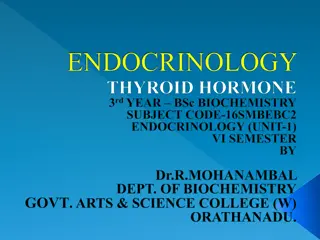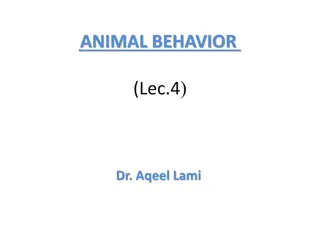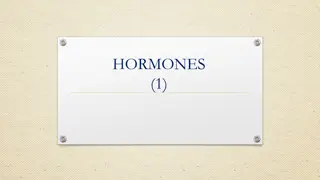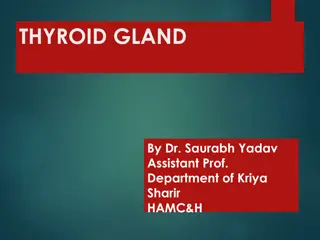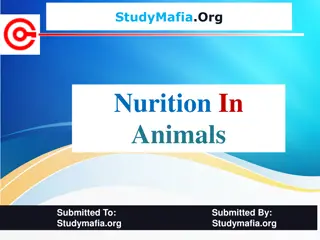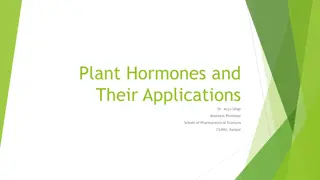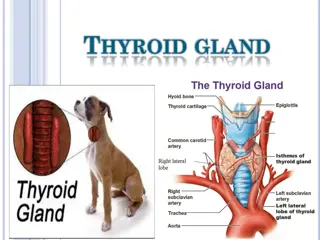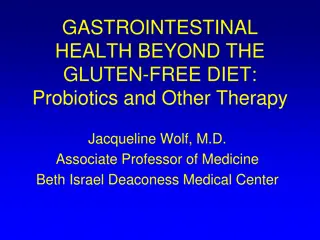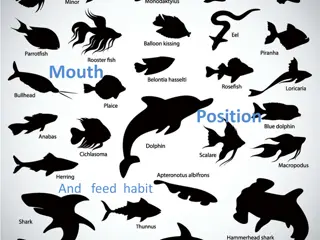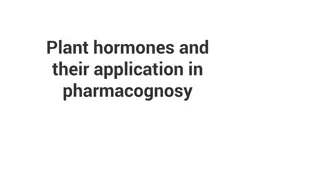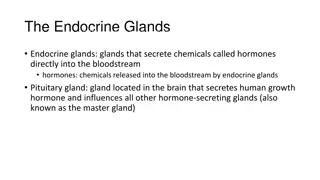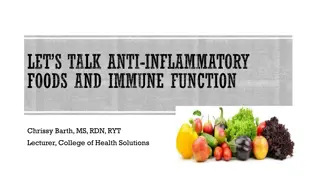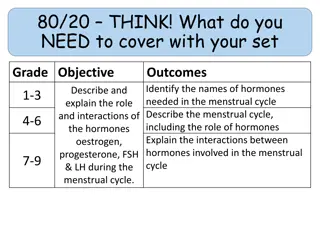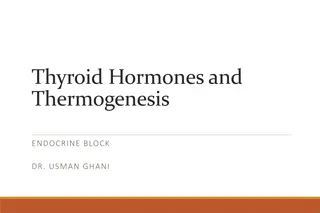Understanding the Role of Gut Hormones in Regulating Feeding Behavior
The syllabus covers relevant anatomy and physiology related to the gastrointestinal tract, emphasizing the regulation of feeding processes. It discusses the role of gut hormones such as ghrelin, obestatin, cholecystokinin, pancreatic polypeptide (PP), and peptide YY (PYY) in controlling appetite, energy intake, and digestion. Through an exploration of these hormones and their effects on hunger, satiety, and metabolism, a comprehensive understanding of the intricate mechanisms behind feeding behavior is achieved.
Download Presentation

Please find below an Image/Link to download the presentation.
The content on the website is provided AS IS for your information and personal use only. It may not be sold, licensed, or shared on other websites without obtaining consent from the author. Download presentation by click this link. If you encounter any issues during the download, it is possible that the publisher has removed the file from their server.
E N D
Presentation Transcript
Syllabus Unit 1: RELEVANT ANATOMY AND PHYSIOLOGY 1.1 Surgical Anatomy of the Abdomen 1.2 3D View of the Gastrointestinal Tract 1.3 Physiology of the Gastrointestinal Tract 1.4 Gut Hormones 1.5 Absorption and Nutrition
Introduction Feeding is one of the basic processes of the organism with the final aim of preserving life. Hunger is the signal to the start of feeding and satiety is the sensation for ending feeding. The regulation of both processes is controlled by complex mechanisms that involve the adipose tissue. Gut hormones are secreted from gastrointestinal cells in response to food intake and are important regulators of energy balance and glucose homeostasis. The hypothalamus contains the centers of hunger and satiety: Lateral nucleus. Ventromedial nucleus. Arcuate Nucleus. the brain, the gut and
Ghrelin Ghrelin is primarily expressed by cells in the gastric fundus and is often described as the 'hunger hormone'. Ghrelin levels rise before feeding leading to an increased appetite and energy intake, this means that Ghrelin is an orexigenic hormone. At the same time, body metabolism is slowing down. Concentrations are also high in conditions of prolonged fasting and cachexia. Following a meal, ghrelin levels decrease proportionally to the amount of ingested food. The decrease in the plasma ghrelin concentrations in response to nutrient ingestion is reduced in people with obesity compared to people of normal weight. The orexigenic compounds stimulate the appetite, while the anorexigenic compounds suppress the appetite
Ghrelin Obestatin: Produced in the stomach from the same precursor as ghrelin but its effects are opposite. Inhibits ingestion, weight gain, jejunum contractility and gastric emptying. Cholecystokinin (CCK): CCK is an anorexigenic hormone expressed in the duodenum and jejunum in response to a meal. CCK mediates digestion of fat and protein in the small intestine, mainly via CCK-1 receptor binding. This triggers the release of pancreatic digestive enzymes and stimulates gall bladder contraction and bile secretion. Plasmatic levels of CCK increase 15 minutes after a meal.
PP and PYY Pancreatic polypeptide (PP): PP is a hormone secreted by pancreatic PP cells in the Islets of Langerhans. PP levels are low during the fasting state and increase in response to a meal. The levels of circulating PP are proportional to the amount of calorie intake. Induces relaxation of the gallbladder, inhibition of the pancreatic secretion and a delay in gastric emptying. PP acts antagonistically to CCK, inducing relaxation of the gallbladder and inhibition of pancreatic secretions and delay in gastric emptying. Peptide Y (PYY) PYY is an anorexigenic hormone produced by enteroendocrine cells throughout the intestinal with highest concentration in the ileum and colon. Levels increase in response proportionally to the energy intake. PYY acts upon the hypothalamus and reward regions of the brain to reduce appetite and also regulates blood glucose levels. PYY Inhibits NPY neurons, and by this mechanism may contribute to the anorexigenic effects, leading to reduced gastric motility and enhanced digestion and absorption. to nutrient ingestion and
Ghrelin Glucagon-like peptide-1 (GLP-1) GLP-1 is an endocrine hormone secreted by intestinal epithelial L-cells in response to food intake. Via its incretin effects, GLP-1 is a key regulator of glucose homeostasis, increasing glucose-induced insulin secretion and inhibiting pancreatic islet cell. GLP-1 inhibits food take, slows down gastric emptying and increases satiety. Up-regulates the expression of genes in pancreatic B cells, leading to promotion inhibiting the apoptosis. Oxyntomodulin (OXM) OXM is an anorectic, appetite suppressing hormone co- expressed with PYY and GLP-1 by intestinal L-cells. OXM decreases the secretion of gastric acid and ingestion. OXM exerts is action by binding the GLP-1 receptor, decreasing gastric acid secretion and inhibiting food intake. glucagon secretion from of neogenesis of
Glucagon, GIP and Amylin Glucagon: Expressed by pancreatic alpha cells. Increases the concentration of glucose in blood in response to hypoglycemia and increases energy expediture. Infusion of glucagon decreases food intake and gastric emptying. Gastric inhibitory polypeptide (GIP): Expressed by K cells of the duodenum and proximal jejunum in response to the ingestion of carbohydrates and fats. Its levels are increased in patients with obesity and it has an anabolic effect on the adipose tissue, as well as lipolytic effects. Amylin: Amylin is co-secreted with insulin from pancreatic B cells in response to ingestion. Acts on appetite regulating centres in the brain to reduce energy intake. Amylin levels are low during fasting and increase quickly in response to increased glucose levels following a meal. The anorectic effects of amylin involves the binding to receptors in several regions of the brain, leading to satiety and reduced food intake. Delays gastric emptying, inhibits gastric secretion, reduces the postprandial increase of glucose, and decreases food intake.


